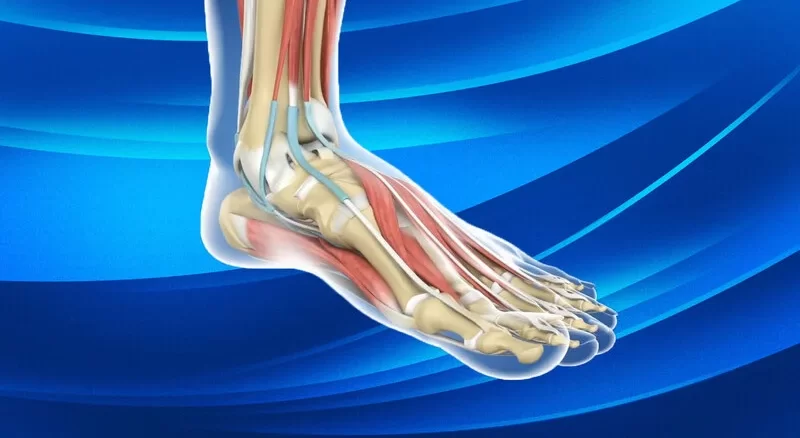One of the most important complications in ankle sprains is articular cartilage involvement, which can include fractures and tearing of the cartilage in the ankle joint, one of the most important bones in the foot that can suffer this injury.
It is the talus bone, or scapula. In ankle sprains, this bone becomes sluggish and can cause chronic ankle pain. Another disease following an ankle sprain is ankle disc osteochondritis. We will review ankle disc osteochondritis and its treatment methods in the following.
What is ankle disc osteochondritis?

Ankle disc osteochondritis is a joint disease in which the bone beneath the joint cartilage is destroyed due to a lack of blood flow. This bone and cartilage can then break, causing pain and possibly preventing joint movement.
Osteochondritis disease often occurs in children and adolescents. This disease can show symptoms after an injury to the joint or after several months of activity, especially high-impact activities such as jumping and running, which affect the joint. This disease mostly occurs in the knee. It can also be seen in the elbow, ankle, and other joints.
Orthopedic doctors stage osteochondritis discs according to the size of the injury, whether the fragment is almost or completely separated, and whether the fragment is in place. If the loose piece of cartilage and bone remains in place, there may be little or no symptoms. In young people, when the bones are still growing, the injury can heal on its own.
Surgery may be necessary if the detached fragment falls and becomes trapped between the moving part of the joint or if there is persistent pain. Those who live in UAE can go to special doctors for treatment of osteochondral defects of the ankle in Dubai.
The damage mechanism of the osteochondritis disc of the talus bone

In sports activities or daily work, there is a possibility of sprains in the ankle. These sprains can include lesions of the ligaments of the ankle joint or joint capsule and joint retinaculum. Moreover, hard pressure on your ankle can cause a fracture. If you face a fracture, don’t forget to visit your doctor for treatment of a foot fracture.
- This complication was proposed for the first time by Konig in 1888.
- The talus bone is the third anatomical site after the knee and elbow, often affected by injuries.
- This broken piece, along with its cartilage, can be displaced in the joint and cause the joint to lock during movement.
- Due to the damage to the area’s blood vessels, the appendage cannot be repaired.

The causes of ankle disc osteochondritis
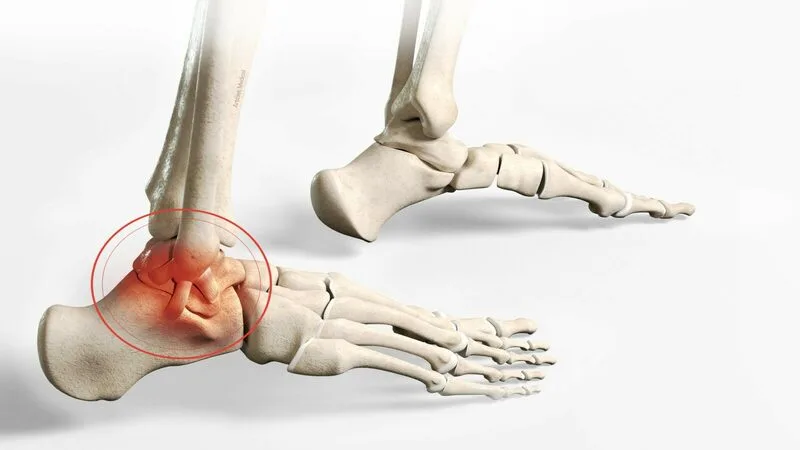
The cause of ankle disc osteochondritis is unknown. Reduced blood flow to the end of the damaged bone may result from repetitive strain injury. Also, small and repeated injuries can damage the bone. There may be a genetic factor, and the disorder occurs more often in some people.
Besides your ankle, you may face some other injuries to your foot that may need surgery. In any case, you should immediately go and see your doctor. However, there are so many good doctors in Dubai, and you can visit them for cosmetic foot surgery in Dubai.
Symptoms of ankle disc osteochondritis
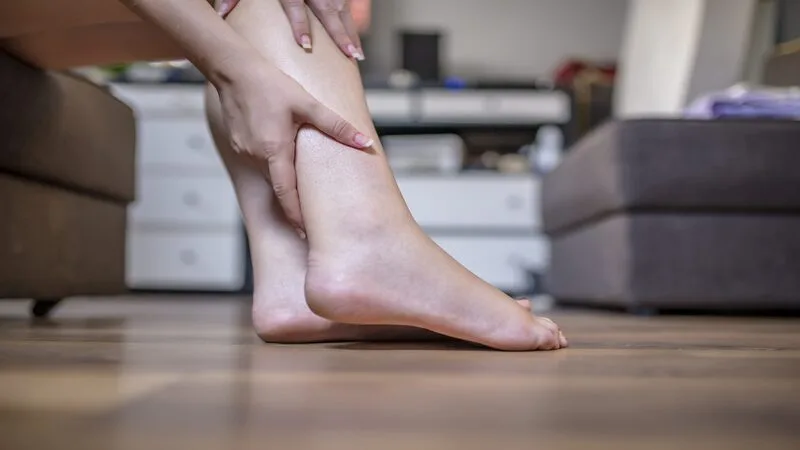
The signs and symptoms of ankle disc osteochondritis are as follows:
The pain
The most common symptom is osteochondritis, which can be caused by physical activity. Climbing a mountain, climbing stairs, or exercising are factors that can cause osteochondritis.
Inflammation and pain on palpation
The skin around the joint may become thin and swollen due to inflammation and pain.
Snap or joint mass
If a fragment becomes loose and becomes trapped between the bones during a movement, the joint may become locked in one position.
Joint weakness
The patient may feel that the joint is loose or weak.
Reducing the range of motion
The patient may lose the ability to fully straighten the knee due to the effect on the lower limb.

When should you see a doctor?
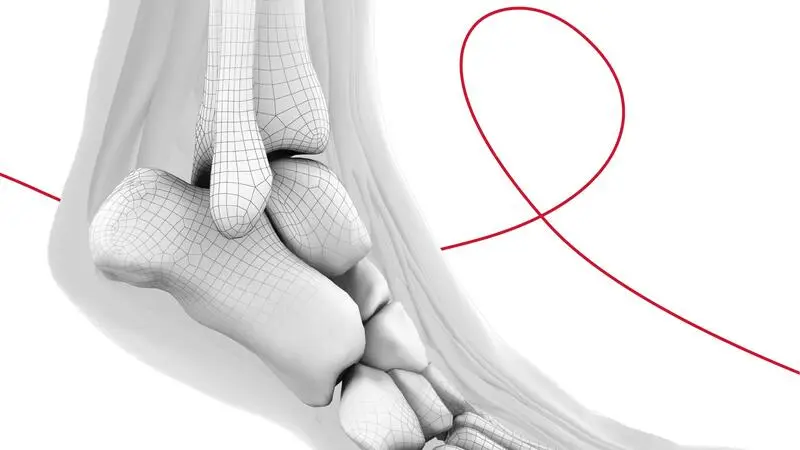
If you have persistent pain or discomfort in your knees, elbows, wrists, or other joints, you should definitely consult a doctor. Other signs and symptoms that may require calling or consulting a doctor include joint inflammation or the joint’s inability to achieve a full range of motion.
Also, symptoms related to your toes are important, and you should pay attention to them. If you are faced with any injuries related to your toes, see your doctor for treatment of claw toe.
Diagnoses of ankle disc osteochondritis

The orthopedist will apply pressure to the affected area during the physical examination to identify tender areas. In some cases, you or your doctor will be able to feel the lesions inside your joint. The doctor also examines other structures around the joint, such as ligaments.
Your doctor will also ask you to move your joint in different directions to see if the joint can move normally in different directions.
Imaging tests
Your doctor may order one or more of these tests:
X-rays: X-rays can show bone abnormalities in the joint.
MRI: Radio waves and a strong magnetic field can provide detailed images of hard and soft tissues, including bone and cartilage. If the X-ray looks normal, but you still have pain, your doctor may order an MRI.
CT: This method combines x-ray images taken from different angles to produce cross-sectional images of internal structures. A CT scan allows your doctor to see the bones in more detail, which can help locate loose parts in the joint.
Risk factors of ankle disc osteochondritis
Ankle disc osteochondritis often occurs in children and adolescents between 10 and 20 years of age who have many sports activities.
This disorder may cause arthritis in these joints over time.

Prevention of ankle disc osteochondritis
Teenagers participating in team sports can benefit from education about the dangers of joint overuse. Learning proper techniques, using proper sports equipment, and participating in strength and stability exercises can help reduce the chance of injury.
Treatment of osteochondritis dissects talus bone
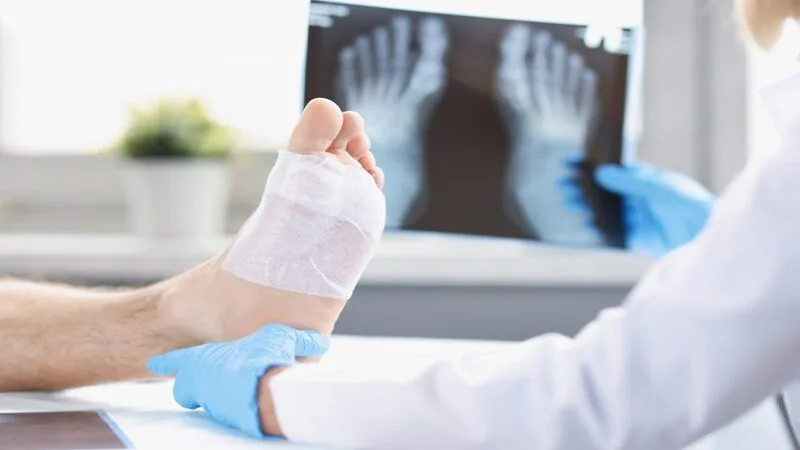
The treatment of ankle disc osteochondritis is intended to restore the normal function of the affected joint, reduce pain, and reduce the risk of osteoarthritis. There is no single treatment for this disorder. In children whose bones are still growing, bone defects can be treated with a period of rest and protection.
Initially, the doctor may suggest protective measures, which may include:
Resting
Avoid activities that cause joint pressure and tension, such as jumping and running. You may need to use crutches for a short time if the pain causes you to limp when walking. Your doctor may use a splint to prevent the joint from moving for several weeks.
Physiotherapy
In most cases, this treatment includes stretching exercises and muscle strengthening exercises, which support the joints. Physical therapy is also usually recommended after surgery.
Surgery
Surgery may be required if there is a loose piece in the joint and this area is still affected, and traditional treatments are not effective after 4 to 6 months. The type of surgery depends on the size and stage of the injury and how the bones are maturing.
Meta: What is ankle disc osteochondritis, and why does it occur? In this article, we examine and treat ankle disc osteochondritis. Foot surgeon in Dubai, Dr. Wali Elahi.


